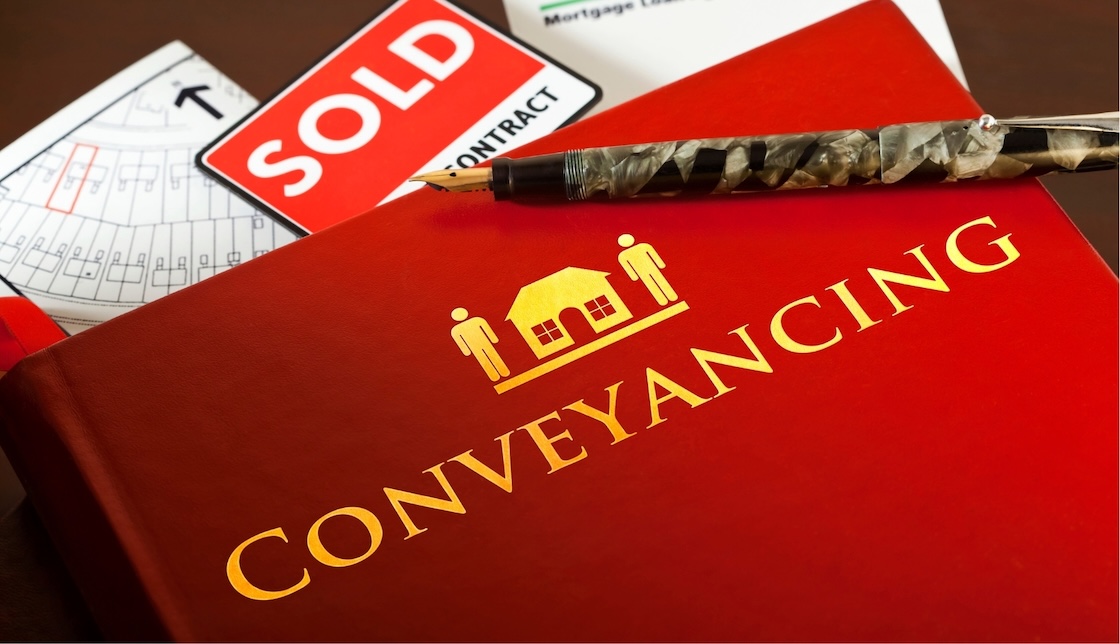DIY Conveyancing: The Pros, Cons and Costs of Self-Conveyancing in the UK
19 September 2025 • 14 min read

See what our customers have to say about us
Key Takeaways:
- DIY conveyancing is the legal process of transferring ownership of property without using a professional conveyancer or solicitor.
- Self-conveyancing is suitable for straightforward property transactions that involve freehold units, cash purchases, a deal between family (where everyone knows the property’s history) and a clear title history.
- Complex property sales should use a professional conveyancer to minimise costly errors, risk of property fraud and mortgage lender refusal while enjoying legal expertise and insurance.
- Saving on conveyancing solicitor fees may lead to costly mistakes that could lead to a failed property transaction.
DIY Conveyancing: Can I do my own Conveyancing?
Can you DIY conveyancing? The answer to that is yes. Hiring a professional conveyancer or solicitor is not a legal requirement in England or Wales.
However, the more important question is, should you do your own conveyancing?
Buying or selling a property in the UK can be an exciting, expensive and complex process. There are several legal requirements, paperwork and steps to complete.
Part of that is the conveyancing process. It involves the legal and administrative steps to transfer property ownership from one person to another. When done right, conveyancing can also protect you by identifying issues with the property. But when you make a mistake, it can compromise the legality of the property transaction.
If you want to lower the risk, getting a professional conveyancing solicitor is the logical option. Of course, some people would question conveyancing fees. Is it worth it to pay a professional conveyancer or solicitor? Or can you do your own conveyancing and save money?
To help you make the right choice, let’s talk about what DIY conveyancing means, specifically the pros, cons, and costs of self-conveyancing.
What is DIY Conveyancing?
DIY Conveyancing is when the buyer or seller takes on the legal responsibility of transferring ownership of a property.
Conveyancing involves the legal process of transferring property ownership from the seller to the buyer. It encompasses various legal tasks and responsibilities, including drafting and reviewing contracts, conducting property searches, liaising with third parties (e.g., mortgage brokers, other solicitors), registering ownership, arranging payments, and fulfilling other statutory requirements. The whole process can be tedious, so most people choose to hire a professional conveyancing solicitor to manage all these tasks on their behalf. After all, this option comes with legal protection, expertise and peace of mind.
In contrast, DIY conveyancing foregoes the assistance of a professional conveyancer or solicitor. It’s when the buyer or seller takes on all the responsibility themselves.
Self-conveyancing is legally allowed in the UK, as individuals are allowed to act on their own behalf when it comes to legal matters that affect them. This means buyers and sellers can conduct their own conveyancing as long as they are personally involved in the property and adhere to the Land Registration Act 2002 and the Law of Property Act 1925.
When DIY Conveyancing is Suitable
Do you need a solicitor to sell a house or buy one? While most people choose to work with a professional conveyancer, there are a few instances when it’s acceptable to opt for DIY conveyancing.
- Straightforward freehold property transactions. The transaction involves a freehold property where the seller owns both the building and the land it’s built on. These are less complex compared to leasehold properties.
- Cash purchases with no mortgage requirements. If a mortgage is involved, the lender usually requires a professional conveyancer to ensure their financial investment is protected. However, if the property transaction is a cash purchase, you can opt for DIY conveyancing.
- Properties with a clear title history. If the property has a clear and established title, self-conveyancing is suitable. This means there’s no need for an expert investigation since there are no covenants, easements or legal complications associated with the property.
- Transactions between family members. When there’s trust between parties, DIY conveyancing is acceptable because the buyer and seller are aware of the property’s history. As long as they ensure that all legal obligations are met, the risks and chances of future disputes can be minimised.
- Situations where cost-saving is a priority. Legal fees associated with professional conveyancing can cost between £600 and £1,500. If your budget is tight and you’re sure you can minimise mistakes and delays in the conveyancing process, self-conveyancing can be a great option.
When to Avoid DIY Conveyancing
There are situations and property transactions that require professional legal assistance. Even if your budget is tight, you should not attempt to do your own conveyancing in certain instances.
- Leasehold properties. Leasehold conveyancing is more complex than freehold properties. It requires additional documents and will require you to deal with a freeholder or even a managing company. An untrained individual might have a hard time reviewing lease terms, ground rent, service charges or other restrictive covenants. It might compromise the conveyancing process.
- Land registry issues. If the property involved has title defects or other problems with the Land Registry (e.g. unregistered land), you need a professional to resolve the legal issues.
- Property type requires a specialist. Properties that are not considered a house or flat, involve shared ownership schemes, are built for commercial purposes or are subject to planning restrictions may require specialist legal knowledge.
- The seller has complicated circumstances. If the seller is in the midst of a divorce, probate sale or other circumstances that add legal complexity to the transaction, it’s best to get a professional conveyancer to ensure everything is handled correctly.
- The property involves a mortgage. A mortgage lender will require a licensed conveyancer. So if the property involved requires you to deal with a mortgage lender, you can’t DIY the conveyancing process.

Pros and Cons of DIY Conveyancing
Weighing the pros and cons is a great way to determine if you should do your own conveyancing. Take a look at the benefits and risks of self-conveyancing so you can make a wise decision.
Pros of DIY Conveyancing
- Cost savings. This is the most appealing reason for DIY conveyancing. The potential to save between £600 and £1,500 in conveyancing fees sounds good to someone who is currently on a very tight budget.
- Direct control. Some buyers and sellers prefer to communicate and handle the documents themselves directly. They don’t want to have to wait for the solicitor or conveyancer to get updates.
- Faster completion. Thanks to being directly in control, you can also influence the speed of the conveyancing process. You can work at your own pace and chase after information and documents as fast as you can.
- Flexible documentation. You can prepare and submit documents on your own timeline. There’s no need to wait on another party’s schedule.
Understanding conveyancing fees is an important part of deciding. Find out how much conveyancing really costs.
Cons and Risks of DIY Conveyancing
- No professional negligence insurance. Working with a professional conveyancer means their professional indemnity insurance covers you. If their mistake costs you money, the insurance will cover that loss. If your self-conveyancing costs you money, you’re liable for that loss alone.
- Increase personal liability. One error can lead to serious legal or financial consequences. It could be an incorrect legal form, a missed search result, or a misunderstood contract clause. Even the slightest mistake can compromise the property’s completion, or maybe even lead to a lawsuit.
- Time-intensive process. Conveyancing involves tedious tasks such as research, paperwork, coordination and communication. It can be overwhelming if you’re not doing it full-time.
- Lack of network and expertise. Solicitors and conveyancers have established a strong network of professionals, enabling them to navigate the conveyancing process with ease. This includes other legal representatives, local authorities, mortgage lenders, and other relevant parties. This allows them to communicate and resolve issues, ultimately completing the property transaction.
- Mortgage lender resistance. As mentioned, mortgage lenders usually require professional legal representation. You can’t complete the conveyancing process if you can’t get the mortgage lender to cooperate with you.
- Risk of conveyancing fraud. With property fraud a growing issue in the UK, professional conveyancers utilise security protocols such as identity verification, AI title checks, and secure data exchange. These protect against scams and minimise risks.
How Much Does DIY Conveyancing Cost?
Although self-conveyancing will save money on professional legal fees, the overall conveyancing process will still cost you. You have to pay essential disbursements that include the following:
- Property searches. £250 to £400 (+VAT)
- HM Land Registry fee. £20 to £540 (depending on the property value)
- Stamp Duty Land Tax. Varies (depends on the property value and buyer circumstances)
- Building survey fee. £250 (based on the latest Home Condition Report of the Royal Institute of Chartered Surveyors)
- Title deeds. £6 to £25 (depends on type of property)
- Bank transfer fee. £30 to £45 (depends on the lender)
- ID checks. £20 to £50
Sellers have to pay added expenses like an Energy Performance Certificate (EPC) and other safety checks required to complete a sale. Buyers also need to budget for optional searches and risk assessments, like coastal management for property transactions in Brighton.
Attempting DIY conveyancing will still result in you paying these costs. If you make a mistake, the price might double. For instance, failing to identify a planning issue may cost you thousands in legal fees. Any mistake might also cause the transaction to fall through, making you lose all disbursements you’ve already paid.
All these negate the potential savings of self-conveyancing.
Self-Conveyancing When Buying or Selling a Property
If you’re determined to opt for DIY conveyancing, you need to ask, what does a Conveyancer do? You need to familiarise yourself with the process to ensure you won’t make any mistakes.
Remember that conveyancing will be different for buyers and sellers. Both are complex, but a buyer’s conveyancing journey takes on more legal and financial risks.

Self-Conveyancing When Buying
If you’ve been wondering, “Can I do my own property searches?” or “Do I need a solicitor to buy a house?”
Yes, you can. As the buyer, your focus should be to ensure the property is legally sound so you’re protected from future issues. Among the crucial steps you need to complete are:
- Verify your ID. Get in touch with the Land Registry to verify your ID.
- Check the title deed. Go to the Land Registry to check the validity of the title deed. A property title has a unique Folio Number that includes specific information, such as the property description, ownership records, last selling price, mortgage owed and other similar information.
- Review the contract. This includes the draft and final contracts that will be provided by the buyer (through their solicitor).
- Conduct property searches. As mentioned, you can do your own property search. You just need to go to the City Council page where the property you want to buy is located. For instance, go to the Nottingham City Council if you want to buy a property there. The steps to conduct the property search are available on the website of local authorities, but you need to interpret the results yourself. Admittedly, this could be confusing if you’re not familiar with the terms.
- Raise enquiries. Send a list of enquiries to the seller or their legal representative. The purpose of these enquiries is to ensure the property is legally sound. It should also clarify any issues you uncover during the property search (or any document they’ve provided).
- Secure funds. This step usually involves a mortgage lender. If you’re getting your funds from them, you need professional legal representation. But if the funds will come from your account, you just have to contact your bank to ensure the transfer of funds is secure.
- Finalise the contract and exchange. Coordinate the exchange of contracts and ensure it will make the transaction legally binding. You’ll also be responsible for arranging the deposit so it’s transferred to the seller.
- Completion. On completion day, you need to ensure the remaining balance is transferred to the seller. Then make sure the transfer deed is signed and duly registered with the Land Registry. You also have to pay your dues (e.g. Stamp Duty Land Tax).
Self-Conveyancing When Selling
If you’re the seller, the conveyancing process will still be complex, but not the same as the buyer’s journey. Among the conveyancing steps you’re responsible for are:
- Gather documents. Compile a comprehensive pack of legal documents that includes the title deeds, sales memorandum, property information form (TA6), Energy performance certificate, fixtures and fittings form (TA10), draft contract, etc.
- Respond to enquiries. Be ready to answer enquiries about the property. This can be time-consuming, and there might be a lot of back and forth. Make sure you understand the property’s history so you can answer questions promptly and accurately.
- Repay the mortgage. If the property owes a mortgage, you will be responsible for getting the redemption statement from the lender. You’ll need to ensure the mortgage is paid in full after completion. This might be difficult if the buyer’s solicitor requires a professional undertaking so the funds can be transferred to pay the mortgage.
- Manage the exchange and completion. You’ll be responsible for managing the exchange of contracts and the transfer of funds on completion day. Make sure all funds are received before you turn over the keys to the new owner.
You can find more details about the stages of the conveyancing process here.
Conveyancing with Muve: Quick, Affordable, Stress-Free
While the cost savings associated with DIY conveyancing seem tempting, the risks may be too significant for some people. A property transaction is one of the largest financial undertakings you’ll ever do. One mistake can lead to monumental losses that might compromise the professional fee savings you wanted to enjoy.
At Muve, we understand how conveyancing fees are crucial in deciding whether to self-conveyance or seek professional help. This is why we offer transparent, fixed-fee conveyancing quotes with no hidden costs. You don’t have to worry about unexpected extras, except where unforeseen legal requirements apply, which could not be identified at the point of quotation. But even then, you will be notified immediately of any changes.
Our conveyancing service, provided by licensed conveyancing solicitors, comes with a combination of local expertise and innovative digital tools (including AI technology). This allows us to offer a seamless and stress-free experience, regardless of whether you’re buying or selling a property. We’ll handle all the legal work and provide access to a 24/7 online portal where you can get real-time updates on your case progress.
Muve conveyancers are trained to move with speed and efficiency to ensure a fast completion without compromising legal accuracy. We focus on proactive systems that reduce delays and mistakes, thus minimising conveyancing costs. We also offer a “No Move, No Legal Fee” guarantee, where we won’t charge our quoted legal fee if the transaction falls through. Only disbursement fees already paid will be charged.
If you’re looking to speed up the conveyancing process, find out how with our guide.
Can You Do Your Own Conveyancing?
Doing your own conveyancing is legally possible, but it’s not always the best option. It could work for straightforward property transactions that involve family members, freehold units or cash purchases.
Otherwise, the risks associated with self-conveyancing could lead to errors, lender rejection, fraud, and hidden costs. The saving potential may be overshadowed by time commitment, personal liability and the risk of making costly mistakes that compromise the transaction.
By working with a reputable conveyancing firm that values speed and efficiency, you have the guarantee of a stress-free and secure conveyancing process.
Discover how Muve can assist with the conveyancing process so that you can enjoy a faster and more cost-effective experience. Get a free quote today and let our award-winning team handle the legal work for you.

FAQs: DIY Conveyancing in the UK
The timeline for DIY conveyancing, just like that of professional conveyancers, will depend on certain factors like the location, length of property searches, property type, etc. It may be longer for DIY conveyancing, especially if the buyer or seller is unfamiliar with the legal procedures and nuances of local conveyancing. Where professional conveyancing with Muve can take as fast as 5 weeks, self-conveyancing in England and Wales may take months to complete.
While DIY conveyancing is legal in the UK, the vast majority of mortgage lenders do not allow it. Lenders need to protect their financial interests. Naturally, they will require a qualified and insured conveyancer who can handle the legalities of the property transaction. They require assurance that all searches are completed and the property title is clean.
Yes, there are several free resources online to help DIY conveyancers, whether you’re in London or Brighton. Stick to government websites to get the correct information and forms to complete the conveyancing process. These will only guide you throughout the conveyancing process, but cannot be deemed as legal advice to protect your personal liability.
You might also like
The exchange of contracts is a crucial step in the house-moving process and is ...
Which is better, value-focused or speed-focused conveyancing package? Find out which option fits your ...

